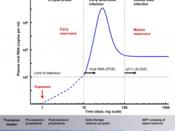TB in India
Introduction
The increasing rate of human immunodefi ciency virus (HIV) infection in many countries has had an impact on tuberculosis (TB) epidemiology. While TB prevalence has remained stable, TB incidence continues to rise, especially in countries most severely affected by the HIV epidemic as well as those facing political turmoil, migration, poverty and unemployment and where intravenous drug abuse is rampant. HIV is the most important known risk factor that promotes progression to active TB in people with Mycobacterium tuberculosis infection (TB/HIV A Clinical Manual 2004). The lifetime risk of tuberculosis in immunocompetent persons is 5% to 10%, but in HIV positive individuals, there is a 5% to 15% annual risk of developing active TB disease (Swaminathan et al 2000). WHO estimated 9.2 million new cases of TB globally in 2006 (139 per 100,000); of whom 7,09,000 (7.7%) were HIV positive (World Health Organization 2008). India, China, Indonesia, South Africa and Nigeria rank fi rst to fi fth in terms of incident TB cases.
In India, there were 2.5 million people living with HIV and AIDS (PLWHA) at the end of 2007 while the incidence of TB was approximately 1.8 million cases per year (WHO Release 2007, RNTCP 2008). In a survey carried out among new tuberculosis patients by the Revised National TB control Program (RNTCP) in 2007, HIV sero-prevalence varied widely and ranged from 1% to 13.8% across the 15 districts (Central TB Division, unpublished observations). Currently, it is not clear what role the HIV epidemic has played in the TB situation in India. If HIV prevalence in the community continues to increase, however, it could affect the TB control program, by decreasing cure rates and increasing mortality and recurrent TB. Further, appropriate management of patients with TB/HIV requires not only treating the tuberculosis but referring...


